Watch Your Fall Feeders for a Red Breasted Nuthatch
Updated: Jan. 21, 2022
Invite the nimble red breasted nuthatch to your feeders with sunflower seeds and suet. These active birds are entertaining to watch.
What Do Male and Female Red Breasted Nuthatches Look Like?
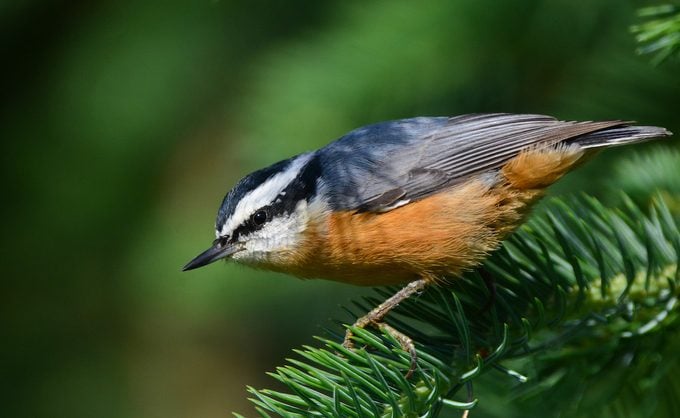
The male red breasted nuthatch boasts a rusty breast, blue-gray wings, black cap, white eyebrow, black eye line and white throat. Females have a lighter red breast and gray cap.
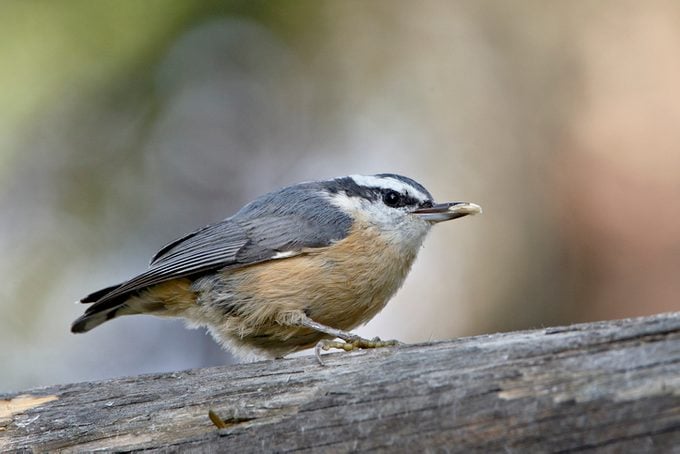
There is so little difference in the appearance of male and female nuthatches that it’s nearly impossible to distinguish between them. In general, the sexes look alike, and they all display a delightful upside-down performance when feeding.
What Do Red Breasted Nuthatches Eat
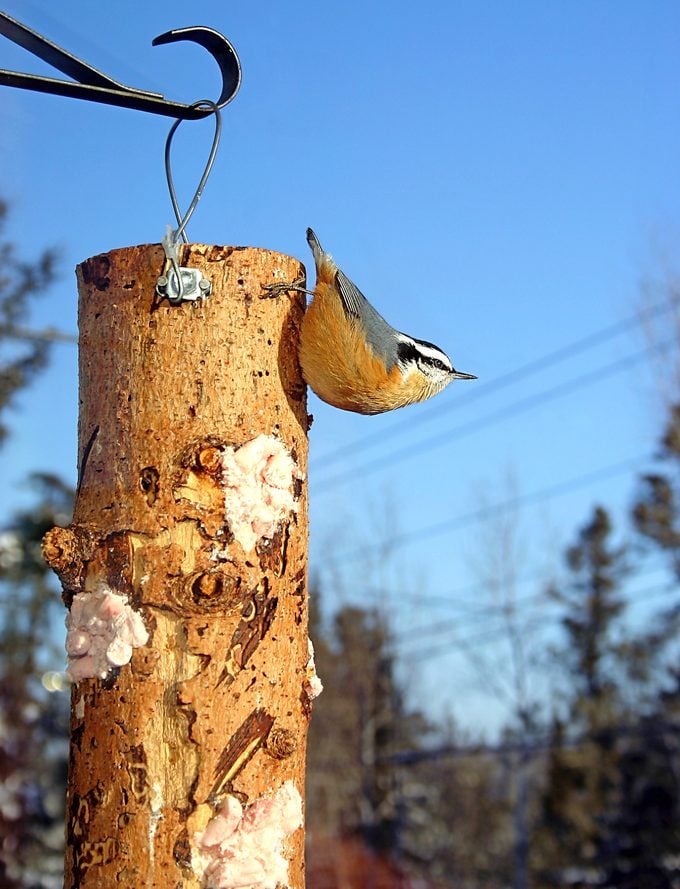
Frequent visitors at bird feeders, the incredibly active 4 1/2-inch-long birds are quite at home there, snatching suet, peanuts, mealworms and other goodies with their thin bills. Adept climbers, they glide up and down trunks and branches in search of beetles, spiders, ants and other insects in warm months. The birds seem almost tame, as they’re more intent on eating than reacting to your presence. Which offers the opportunity to observe their interesting behaviors, says Nancy Castillo, author of the Zen Birdfeeder blog and owner of a Wild Birds Unlimited shop in Saratoga Springs, New York.
“Watch them take a seed or nut from the feeder, fly to a nearby tree, and tuck it away in the bark crevices,” Nancy says. “They may then hack away at it to open it or leave it for retrieval later.” In fact, the word nuthatch likely comes from a Middle English phrase meaning “nut hacker.”
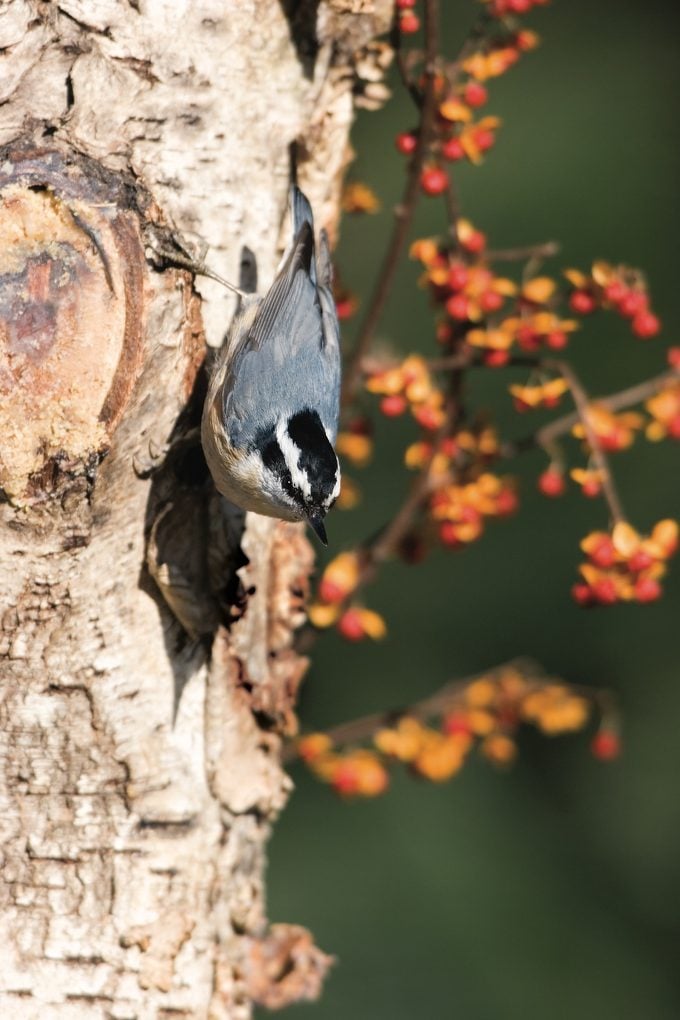
To survive in winter when insects are difficult to find, the intelligent birds remember where they stored seeds and larvae to reclaim when they need them.
“Red breasted nuthatches like eating straight from my garden! I plant sunflowers for them, since they enjoy the seeds,” says Sue Gronholz of Beaver Dam, Wisconsin.
Discover the 4 foods nuthatches love to eat.
Nest and Eggs
Nuthatches are expanding their breeding range in some eastern states where habitats are suitable. Come spring, they fly north to breed within coniferous spruce, fir and hemlock forests or mixed forests that include aspens. The male droops his wings, raises his head and sways back and forth to attract a mate. Pairs might also fly side by side in long, exaggerated gliding patterns.
The female does most of the hard work for nesting, excavating a cavity in a dead or partially alive aspen, birch or conifer, sometimes using a natural opening. Uniquely skilled and crafty, red breasted nuthatches use flakes of bark to smear sticky pine and spruce resin at nest hole entrances, a tactic that may deter predators. They rarely use nest boxes.
She builds a nest of moss, fur, feathers, pine needles and other nesting materials, then lays five to eight white eggs with reddish brown spots. The eggs hatch in about 12 days, and both parents feed their young until the fledglings leave the nest 18 to 21 days later.
Learn how to identify bird eggs by color and size.
Red Breasted Nuthatch Call
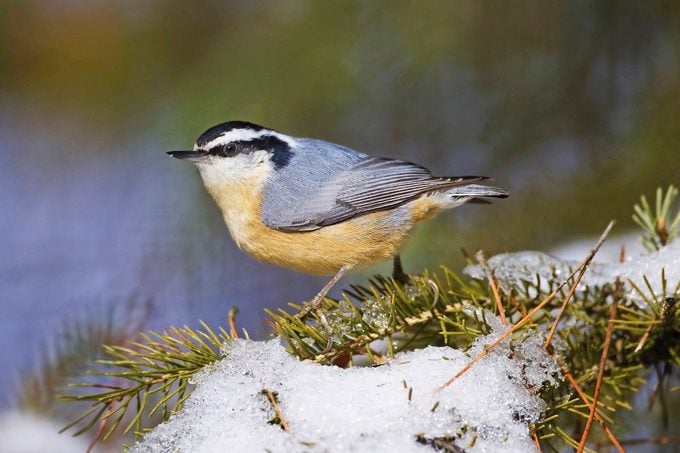
Blaring sharp, tin horn-like calls no matter the weather, busy red-breasted nuthatches add life to even the chilliest days. To attract a female, the male sings a melody that’s drastically different from its typical harsh call.
Learn what a cardinal’s call sounds like.
Range Map and Migration
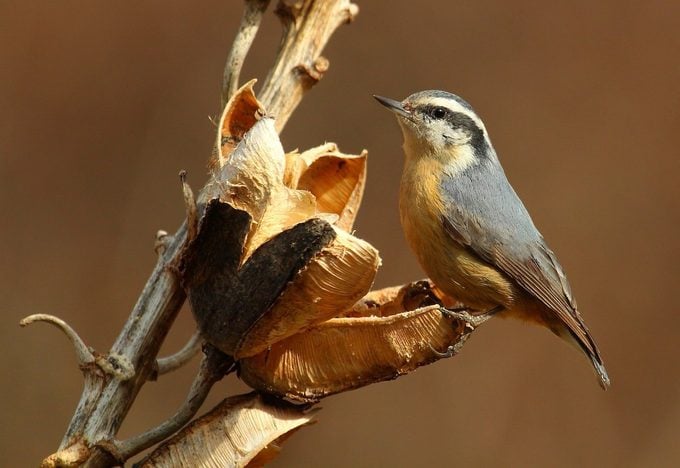
Red breasted nuthatches are partly migratory. They live year-round in coniferous forests across southern Canada and the northern United States. Their range also includes mountainous regions of the Southwest and the eastern U.S. In fall, these birds fly south—sometimes reaching the Gulf Coast in September or October—searching for food. Every two or three years, their movement brings more nuthatches than usual, in a large migration called an irruption.
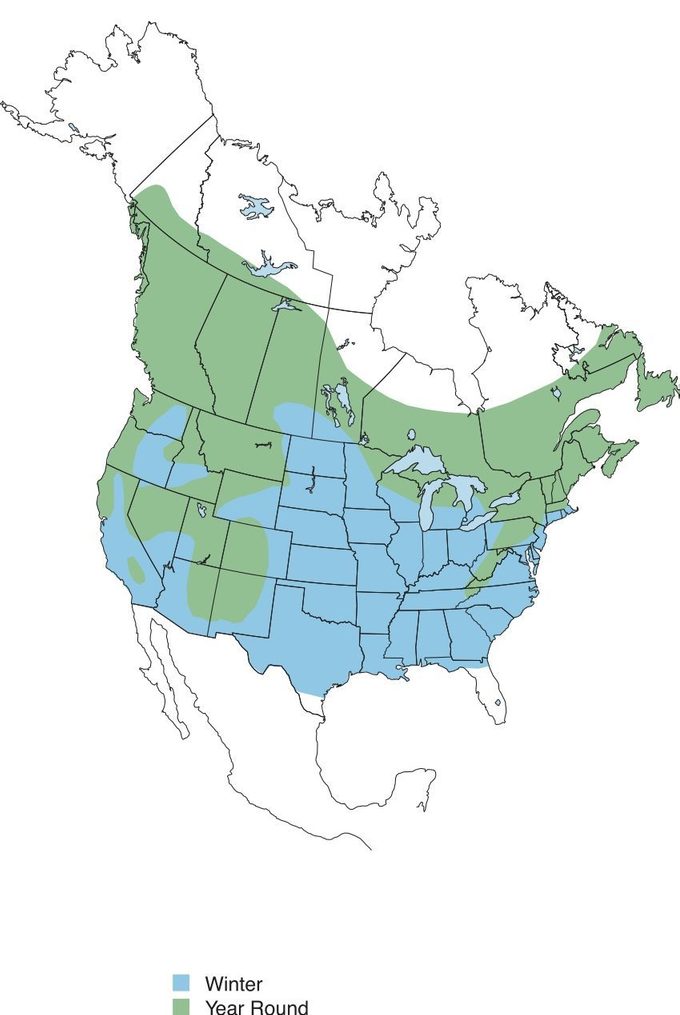
Range maps provided by Kaufman Field Guides, the official field guide of Birds & Blooms.
